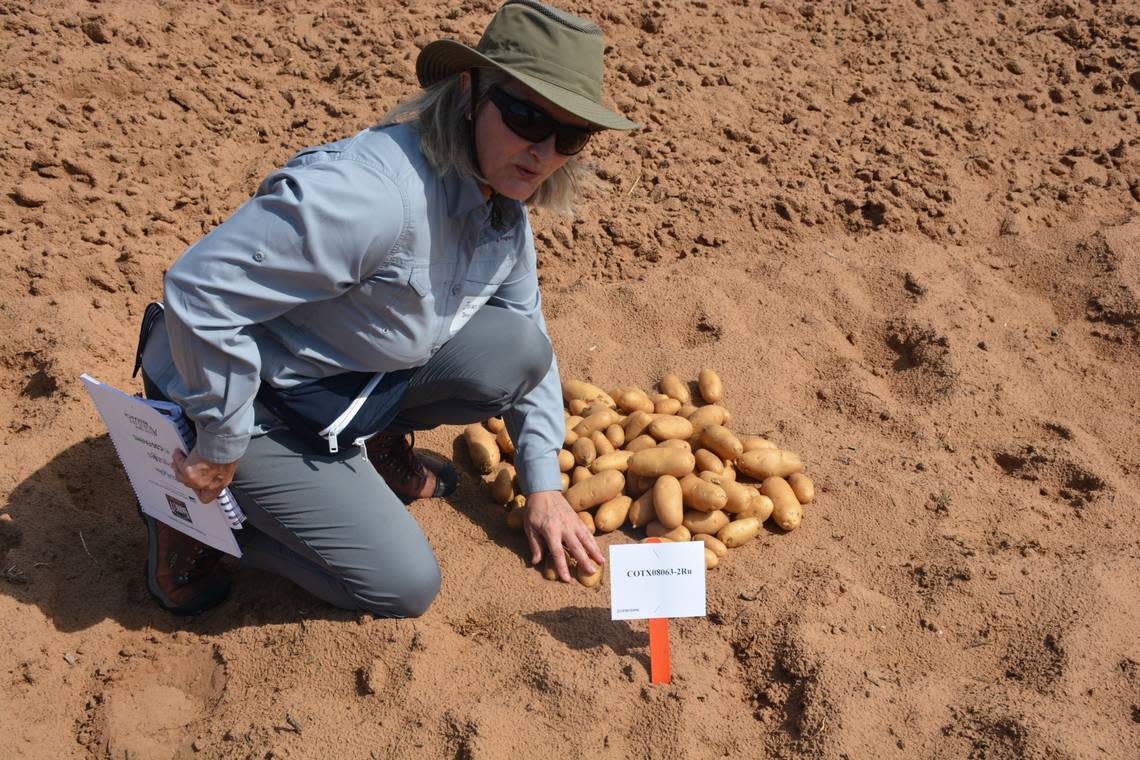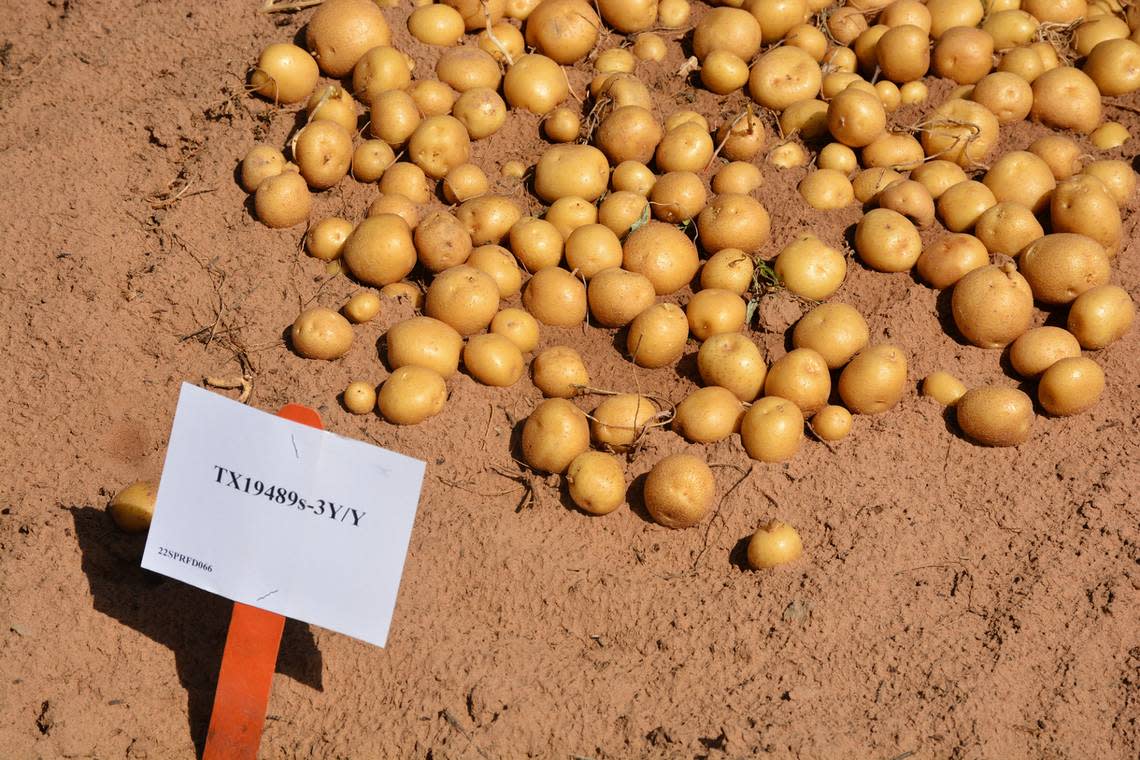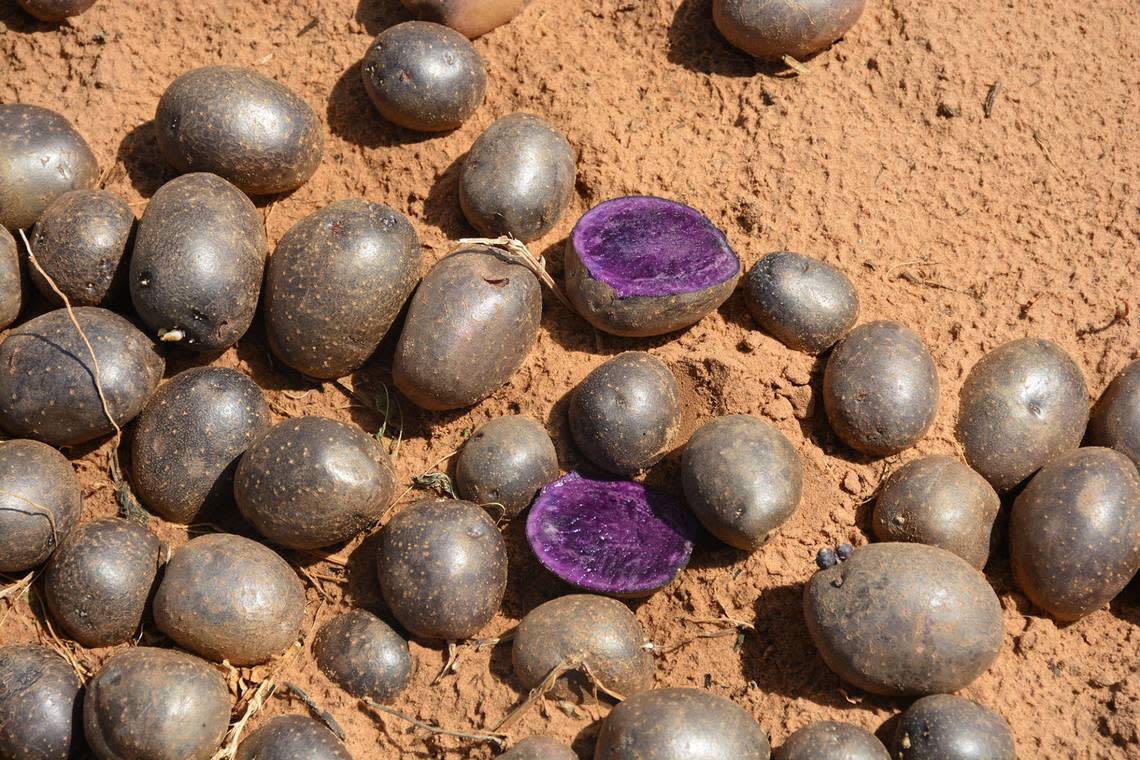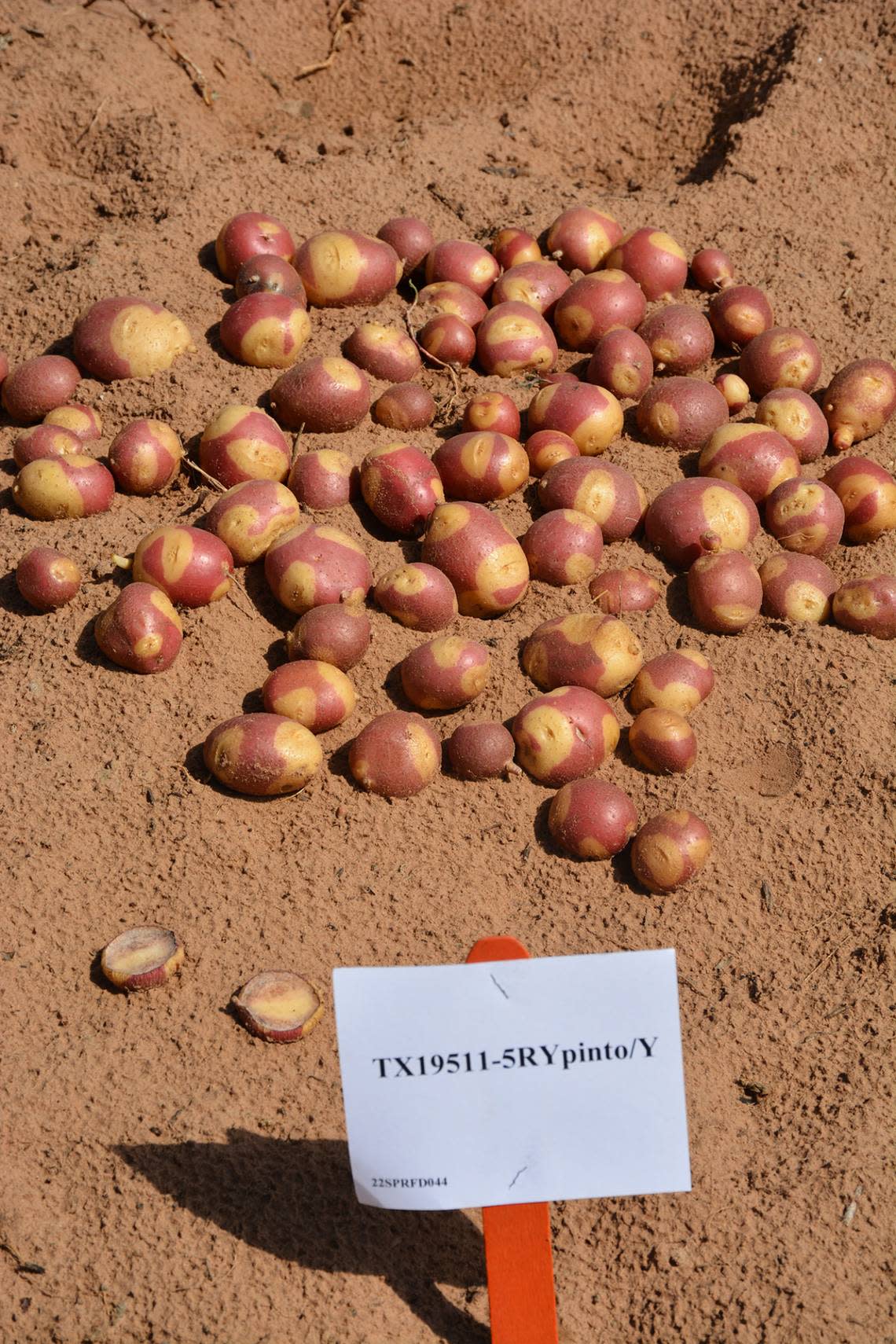Could Texas make the perfect french fries? A&M clones experimental new potato variety
New potato varieties bred by Texas A&M could soon make the perfect homegrown French fries.
“We are quite excited about a light russet experimental potato clone that has a very special feature: a high percentage of starch and high gravity even under the very stressful high-temperature conditions in Texas,” said Isabel Vales, Texas A&M AgriLife potato breeder, in a news release. “I think the French fry processing market, for which Texas has not released any processing russets, is a possibility.”
Historically, Texas has not been a player in the French fry market, primarily because of heavy competition from the Northwest, namely Washington, Oregon and Idaho. The new potato, identified as COTX08063-2Ru, could change that.

The amount of starch in potatoes is the main factor determining whether they can be used to make fries. High solids or gravity means the potatoes are solid and dense, and potato yield as well as starchy matter is high. High-starch potatoes are used to make processed foods like fries, chips and dehydrated potatoes. Potatoes with low to medium starch levels are used for the fresh market.
“In Texas, we cannot get the high solids required for the processing markets,” Vales said. “Out of all of the varieties and experimental clones we evaluated over time, none of them had a high gravity.”
COTX08063-2Ru, however, has a high specific gravity, even under high heat stress conditions in Texas, making very good French fries, Vales said. Some French fry and chipping clones enter national trials every year. This is the second year the potato is in the National French Fry Potato Trials, meaning it could hit the market in seven to eight years.




The Texas A&M Potato Breeding Program is part of the Southwestern Regional Potato Cultivar Development Project, a three-state project funded by the U.S. Department of Agriculture National Institute of Food and Agriculture. Texas A&M University, Colorado State University and the University of California at Davis initiated the project to meet the unique needs of the region’s potato industry, Vales said.
“Potatoes developed by the Southwestern program are planted all over the U.S. and Canada,” Vales said. “In the Southwestern region, we also evaluate potatoes developed by other regional programs.”
One of the challenges to growing potatoes in Texas is that the heat can trigger physiological defects and negatively affect yield and quality. In Texas, the yields get higher with elevation and latitude, making the Texas Panhandle the best place to grow potatoes.
Federal funding is the program’s main source for breeding, with other funds coming from state departments of agriculture, national commodity groups like Potatoes USA, foundations and support from growers. Additional funding comes from royalties from potato varieties released by Texas A&M. The program received more than $900,000 this past year.
Texas A&M recently held an event in Springlake to showcase 180 potato varieties in the pipeline, for both the fresh and processing markets. They included reds, yellows, purples, smalls and fingerlings. One of the fresh-market russets Texas A&M bred has 35 licensees in 12 states.
“The potato varieties we develop come in different tuber sizes, shapes, skin and flesh textures and colors that fit different market needs,” Vales said. “For instance, we collaborate with Tasteful Selections, looking for clones with many small tubers. We are also growing fingerlings and bi-color potatoes. Recently, we developed a round russet with pink eyes and yellow flesh that was provided an exclusive release to explore new market opportunities.”
